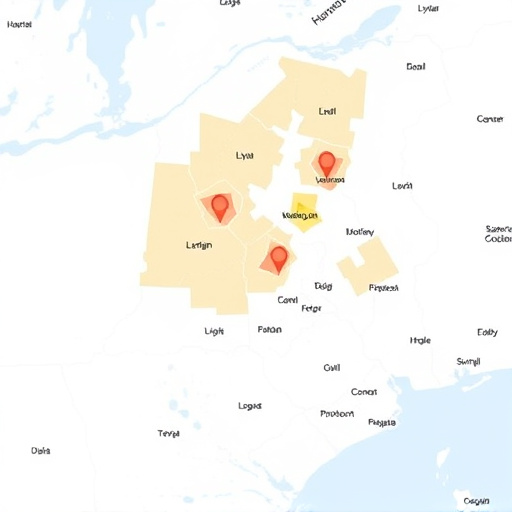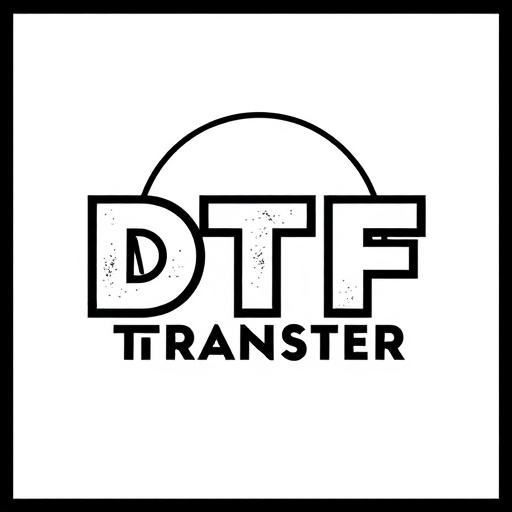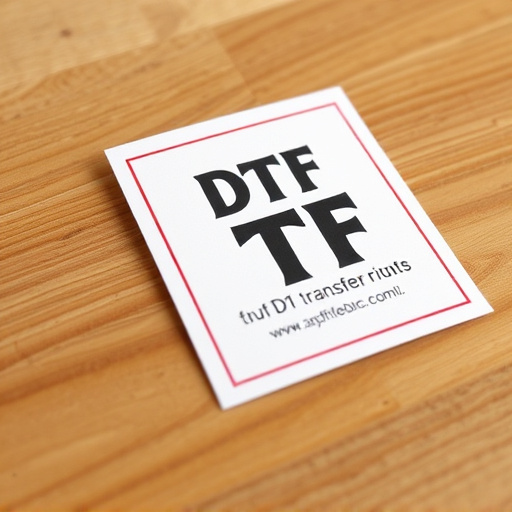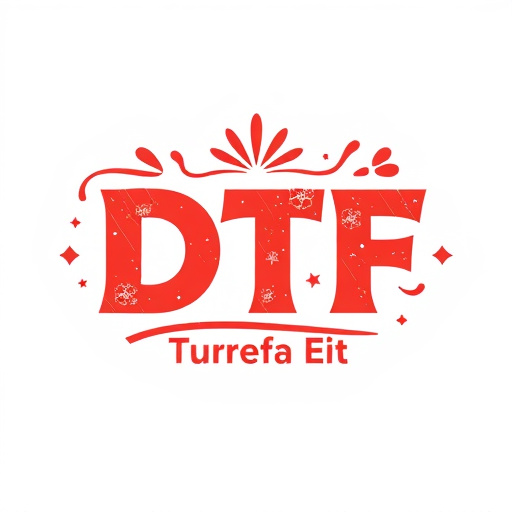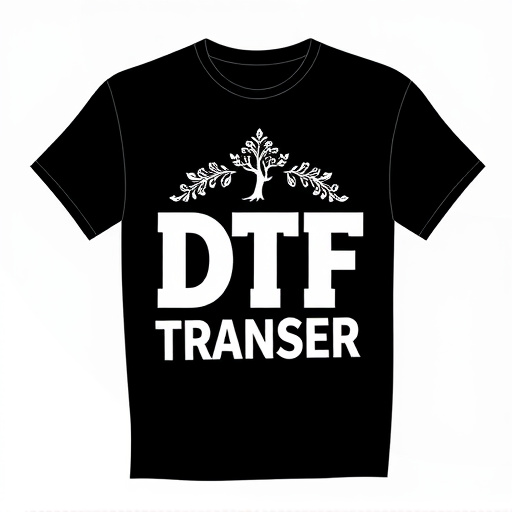Direct-to-film (DTF) printing, a cutting-edge technology, offers precise transfers onto various surfaces. This article delves into the nuanced world of DTF transfers, focusing on dimensional measurements—a critical aspect for achieving high-quality prints. We explore how these measurements, ranging from micron to millimeter, are categorized and influenced by several factors. Understanding these dimensions is key to unlocking the applications and benefits of DTF printing across industries, while adhering to best practices ensures optimal print quality.
- Understanding Direct-to-Film (DTF) Printing: A Brief Overview
- Dimensional Measurements in DTF Transfers: An Introduction
- Categorization of DTF Prints by Size
- Factors Influencing Dimensional Accuracy in DTF Transfers
- Applications and Benefits of Different Dimensional Measurements
- Best Practices for Ensuring Quality in DTF Printing
Understanding Direct-to-Film (DTF) Printing: A Brief Overview

Direct-to-film (DTF) printing is a cutting-edge technology that enables the precise transfer of images and graphics directly onto various film surfaces. This innovative process has revolutionized the way we approach visual storytelling, especially in industries like cinema, animation, and special effects. By bypassing traditional intermediates, DTF allows for a more efficient and versatile method of creating high-quality, custom films.
The beauty of DTF Printing lies in its ability to capture intricate details and vibrant colors, ensuring the final product is a stunning visual experience. This technology offers filmmakers and artists the freedom to experiment with different formats, from large-scale projections to specialized effects, all while maintaining exceptional image quality. With rapid advancements in printing techniques, DTF has become an indispensable tool for creating immersive cinematic experiences.
Dimensional Measurements in DTF Transfers: An Introduction

Direct-to-film (DTF) printing involves transferring images directly onto various media, offering a unique and efficient method for high-quality reproduction. Dimensional measurements play a pivotal role in this process, ensuring precise results. When considering DTF transfers, understanding the dimensions of both the print medium and the original image is essential. This precision guarantees that the final output accurately represents the intended design or artwork.
In practice, this involves specifying width, height, and sometimes even thickness for both the film and the substrate. By categorizing DTF transfers based on these measurements, printers can offer tailored solutions to clients. This approach allows for flexibility in handling diverse projects, from large-scale billboards to intricate small-format prints, ensuring each receives the optimal treatment for its dimensional attributes.
Categorization of DTF Prints by Size
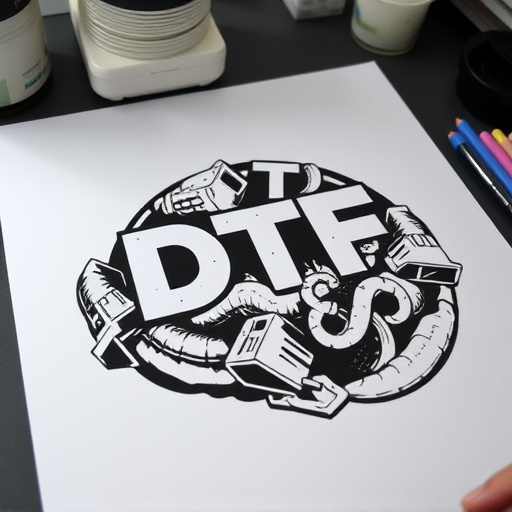
Factors Influencing Dimensional Accuracy in DTF Transfers
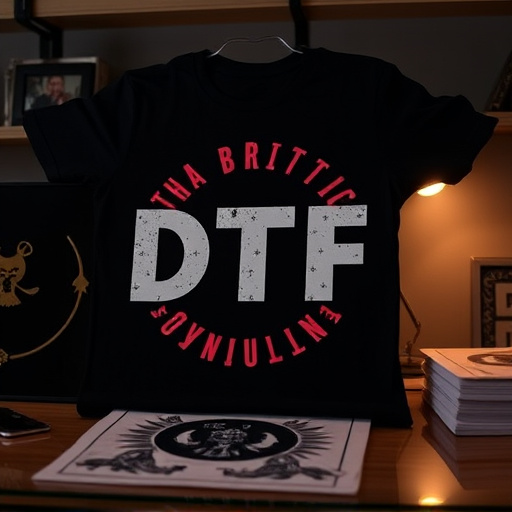
Direct-to-film (DTF) printing, while offering unparalleled convenience and quality, is influenced by several factors that can impact its dimensional accuracy. The precision with which a 2D design translates into a 3D print depends on various parameters, including material properties, printer calibration, and environmental conditions. For instance, different materials have varying coefficients of thermal expansion, which can lead to slight dimensional changes during the cooling process. Ensuring optimal printing temperature and using materials suited for DTF applications can mitigate these effects.
Printers’ calibration plays a crucial role in maintaining dimensional accuracy. Regular calibration checks and adjustments ensure that the printer’s components are aligned precisely, resulting in consistent layer height and overall print dimensions. Environmental factors like humidity and temperature fluctuations can also cause material shrinkage or swelling, affecting the final print size. Controlling these conditions through climate-controlled environments or using materials designed for stability across a range of temperatures helps maintain the intended dimensional measurements in DTF prints.
Applications and Benefits of Different Dimensional Measurements

Direct-to-film (DTF) printing offers a range of dimensional measurements catering to diverse applications, each with unique benefits. For instance, micro-print technologies enable incredibly fine details, ideal for intricate designs and minute text, enhancing security features in banknotes and identity cards. This level of precision ensures anti-counterfeiting measures are effective against sophisticated copying methods.
On the other end of the spectrum, larger format DTF printing supports wide-format applications such as posters, banners, and outdoor signage. These measurements allow for impactful visual displays with vibrant colors and sharp text, making them perfect for advertising, events, and wayfinding. The versatility in dimensional measurements makes DTF printing a go-to solution across various industries, offering both high-resolution details and eye-catching, large-scale visuals through the same technology.
Best Practices for Ensuring Quality in DTF Printing


